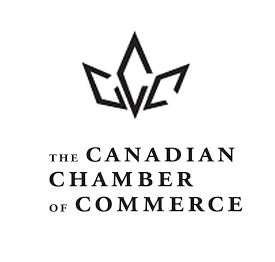
We collect basic website visitor information on this website and store it in cookies. We also utilize Google Analytics to track page view information to assist us in improving our website.
Tariffs and Trade Updates and Information, visit www.chambercheck.ca
|
|
||
|
The high cost of living, inflation, housing affordability, and rising operational costs top the lists of concerns for Ontario businesses, according to the Ontario Chamber of Commerce’s (OCC) most recent Ontario Economic Report (OER).
The report shows a significant rise in business confidence over the course of 2024, climbing from a historic low of 13% to 26% by year’s end. Despite this improvement, confidence remains historically low and fragile, with 48% of businesses expressing a lack of confidence in the economy. Affordability and the cost of living continue to be the most pressing concerns for businesses.
The survey, conducted between October 15 and December 2, 2024, gathered insights from 1,714 respondents representing a diverse range of industries, regions, and organizations.
The results show that when U.S. tariff threats are on the table, business confidence drops dramatically to just 15%, almost erasing the last year’s gains, according to the OCC’s separate tariff survey in early February. This recent research also shows that with tariffs in play, six in ten (60%) business decision makers would lack confidence in Ontario’s economic outlook.
“I may not use the word fragile describing the confidence level and instead use the word tempered,” says Cambridge Chamber of Commerce President and CEO Greg Durocher. “People's optimism for the future of business in the short term is tempered by the impact of Trump’s tariffs. I think most people in business realize that the impact of any decision is probably going to be short term. Whether or not tariffs are long term isn't the issue, it’s the impact of tariffs. So, after a period time, the marketplace settles down and people get used to whatever is the new reality.”
Ontario’s economic outlook varies
Confidence in Ontario’s economic outlook varies significantly across industries, with the information and cultural industries sector reporting the lowest level of optimism at just 17%. Businesses in this sector cite high operational costs, shifting consumer behaviour, declining advertising revenues, and mounting pressures from technological disruption, global competition, and regulatory challenges as key drivers of their pessimism.
The retail (18%), non-profit (20%), utilities (21%), and accommodation and food services (22%) sectors follow closely, reflecting the impact of declining consumer spending amid heightened cost-of-living pressures.
The agriculture sector, while showing a slight improvement over last year, also remains among the least confident sectors (22%). Concerns in this sector centre on extreme weather events, trade and supply chain barriers, and growing labour gaps and succession planning challenges as a significant portion of the workforce approaches retirement.
By contrast, confidence is strongest in the mining (56%), finance and insurance (40%), and administrative and waste management services (40%) sectors. This could be explained by the strong demand for critical minerals supported by Ontario’s Critical Minerals Strategy, rising sustainability initiatives the finance sector’s ongoing resilience, and growth driven by fintech advancements. These sectors demonstrate adaptability and the ability to capitalize on emerging opportunities.
Survey respondents remain optimistic
Regionally, most of Ontario’s regions outside the GTA saw a significant reduction in confidence compared to the previous year.
Confidence is lowest in Stratford-Bruce Peninsula (19%), Northeast Ontario (21%), and the Greater Ottawa Area (21%), where in addition to concerns surrounding high costs and housing affordability, businesses are disproportionately sensitive to government policies and investments and have suffered more extreme weather events than other regions.
Confidence is highest in the Greater London Area (34%), a significant rebound from last year (9%). This resurgence is likely fueled by strong consumer demand, and domestic manufacturing capacity and supply chains, including the announcement of the Volkswagen EV battery plant in St. Thomas.
Despite the challenges, respondents report relative optimism about their own business growth prospects. Nearly half (49%) express confidence in their own future, citing factors such as strong consumer demand, innovation, and improved inflation management, something that doesn’t surprise Greg.
“I think that you'll find that there's going to be a growth and optimism because many sectors in Canada are going to strengthen as a result,” he says. “We’ve never been the ‘buy Canadian’ kind of a nation and the U.S. has always had buy American programs in place because we’ve always understood we were a player in the global market.”
He says there are initiatives created by the Provincial and Federal governments to encourage Canadian businesses to look at other, more reliable markets, rather than depending on the American market.
European Union agreement key
“Why we perceive the U.S. market to be unreliable right now is because anything that the American government does that impacts the trade with their nation is exponential in our case because 80 per cent of our GDP goes to the United States,” says Greg. “So, we're vulnerable to every whim of the U.S. government. For us to get more reliable sources, we need to diversify so we need to have relationships in the European Union.”
He notes the Canada-European Union Comprehensive Economic and Trade Agreement, which Canada signed in the fall of 2016, has been underutilized.
“I think it stands to reason that we have not served ourselves well by not really looking seriously at the European Union for economic trade,” says Greg, noting this happened primarily because of our expectation the U.S. would always remain a reliable trading partner.
“We need to understand what the reality of this is going to be going forward and whether we do get aggressive when it comes to find other trading partners. And if Canadians continue to buy Canadian that will really impact the U.S. exponentially because we do consume a lot of American products.”
Click here to read the report.
Report highlights:
|
||
|
||
|
||
|
||
|
|
||
|
The following column by Cambridge Chamber President and CEO Greg Durocher appears in the winter edition of our INSIGHT Magazine
There’s a chance we might be panicking over nothing after Donald Trump was again elected this past fall as President of the United States, defying political norms in a way few others have.
Despite being a convicted felon—yes, by a jury of his peers, not a partisan judge—Trump secured his return to the highest office in the land, with a staggering 34 convictions under his belt. His campaign rhetoric was, as always, polarizing and often crossed the line of decency.
Politics has clearly changed since there was a time when even a fraction of Trump's controversies would have ended a political career. Yet here we are. Some Canadians celebrated his victory, but it perplexes me why anyone north of the border would since he has demonstrated little regard for Canada, dismissing us as an afterthought despite our deep economic ties.
The truth is America’s prosperity is intrinsically linked to our resources and partnership.
Canada: An Indispensable Ally
Consider this: 60% of the crude oil the U.S. consumes comes from Canada. Saskatchewan supplies uranium, which is essential for energy production and national security, and potash essential for the agriculture industry. Quebec powers the northeastern United States with hydroelectricity. Alberta’s natural gas and Canada’s aluminum and steel exports are cornerstones of U.S. infrastructure.
But what would happen if we turned off the taps? A trade war would hurt us both, but Canada’s contribution to the U.S. economy is undeniable. Trump’s focus should be on challenges like China and Russia, not antagonizing U.S. allies.
Revisiting NAFTA and Trade Tactics
However, his threats are nothing new since we’ve seen this playbook before. In 2016, Trump declared NAFTA (North American Free Trade Agreement) dead, demanding a "fair deal." After much posturing, the agreement was merely updated—something long overdue. Trump called it a victory, and his supporters cheered him on, but the changes were only modest at best.
Similarly, his famous promise to build a wall funded by Mexico resulted in just 732 km of construction—most of which replaced existing barriers. Mexico, of course, didn’t pay a dime and some of the "new" wall even deteriorated quickly, bogged down by allegations of corruption among Trump’s staff.
The Reality of Trump’s First Term
Let’s be honest—Trump’s first term was marked by unfulfilled promises and many controversies. His pandemic response was completely disastrous, with state governors openly criticizing his lack of leadership. Who could forget his infamous suggestion to inject bleach as a COVID-19 treatment? Why would a person even suggest that? Trump signed agreements that drove up gas prices, contributing to inflation.
Running a country is vastly different from running a private business, and Trump’s approach often revealed his lack of governance expertise.
What’s Next?
His 25% tariff plan threat on Canadian goods are likely bluster—an opening gambit to pressure Canada and Mexico into renegotiating trade agreements. It really is a strategy very reminiscent of his NAFTA theatrics.
In the end, we’ll likely see a slightly revised deal that Trump will tout as another one of his "wins." Of course, his base will applaud, despite little substantial change.
Canada’s Challenge
For Canadians, Trump’s presidency is very concerning since his leadership style— always chaotic and self-serving—offers no real benefit to Canada. Therefore, we must brace ourselves for uncertainty and prepare to protect our interests.
Meanwhile, south of the border, Americans will face the consequences of his polarizing and often ineffective leadership.
In the end, Trump’s bravado may have won temporary support from his base, but we must remember it’s critical to separate rhetoric from results. As the old saying goes, “Be careful what you wish for—you just might get it.” |
||
|
||
|
||
|
||
|
|
||
|
Lots of controversy over pipelines to carry oil these days. Is it safe, if we don't do pipe, what will happen? Are there better alternatives? You decide.
|
||
|
||
|
||
|
||
|

|
|
Brian Rodnick 252 July 9, 2025 |

|
|
Greg Durocher 41 July 28, 2023 |

|
|
Canadian Chamber of Commerce 24 January 29, 2021 |

|
|
Cambridge Chamber 2 March 27, 2020 |